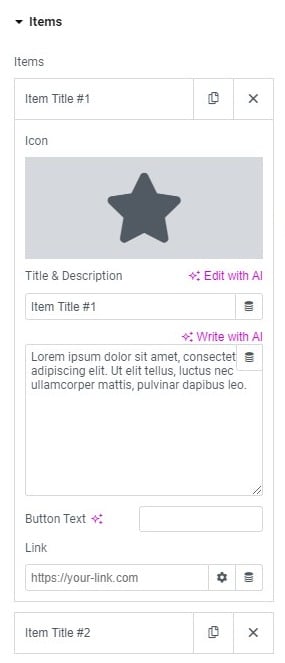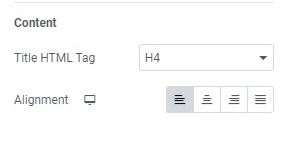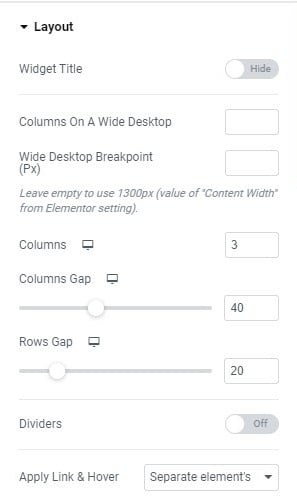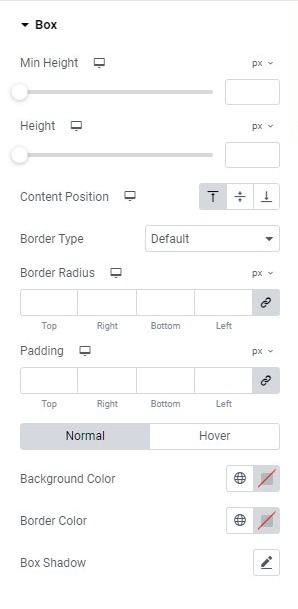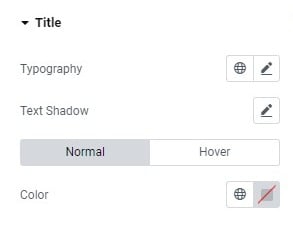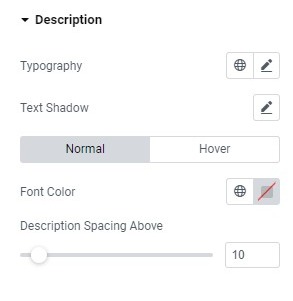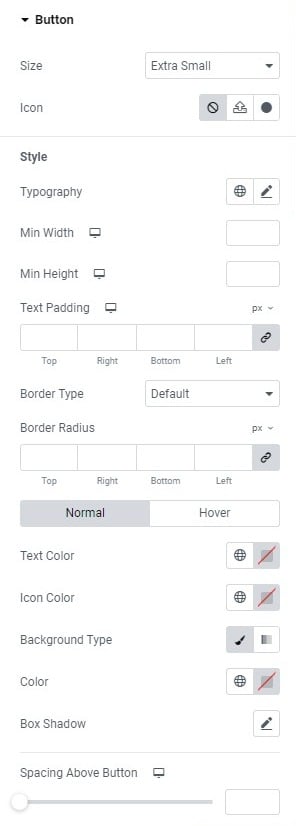This widget allows to create a grid with icons, optionally with links (fig. 1):
Content
Items tab – here user can add Icon Boxes, each box can have Icon, Title, Content, Button, Link (fig. 2.1):
User can set an HTML tag for the title and the alignment of the entire content of the Icon Boxes in the Content section (fig. 2.2):
Layout tab (fig. 2.3) allows to configure:
- widget title (show/hide);
- columns on a wide desktop (allows to set number of Icon Boxes in one row on wide screens);
- wide desktop breakpoint (allows to determine over what width screens are treated as the wide screens);
- columns, number of elements per row for standard screens, adjustable for mobile devices;
- columns gap (space between each Icon Box in a row);
- rows gap (space between each row of Icon Boxes);
- dividers;
- apply link & hover. Determines if the link and hover effect should be applied for each element separately, or for the entire box.
Style
Box tab (fig. 3.1) allows to configure:
- minimum height of the box;
- height of the box, which won’t go below the value of the min-height setting;
- position of the icon and text inside the box
- border type, border width (if the border is enabled), border radius;
- padding;
- colors of background, border and box shadow (for normal and hover state).
Adjust settings for the Dividers (style, width, color) in the appropriate section (fig. 3.2):
You can configure the following styling options under the Icon tab (fig. 3.3):
- position of the icon, on the left, above or on the right of the box;
- align (position of the icon in relation to the box);
- size of the icon;
- min width of the box/background around the icon;
- min height of the box/background around the icon;
- padding;
- border width and width;
- colors of background, border and box shadow (for normal and hover state);
- spacing between icon, and the content.
Title tab (fig. 3.4) – here you can adjust:
- typography;
- text shadow;
- colors for normal/hover states.
Description tab (fig. 3.5) offers the following set of options:
- typography;
- text shadow;
- colors for normal/hover states;
- space between description and the title.
Finally, Button tab (fig. 3.6) allows to configure:
- size of the button;
- icon (icon font or custom SVG);
- typography;
- min width;
- min height;
- padding around button text;
- border type, width and radius;
- colors of text, icon, background, border and box shadow (for normal and hover state);
- spacing between the button and description.
Advanced
The advanced section contains standard Elementor settings. More info is available here.
